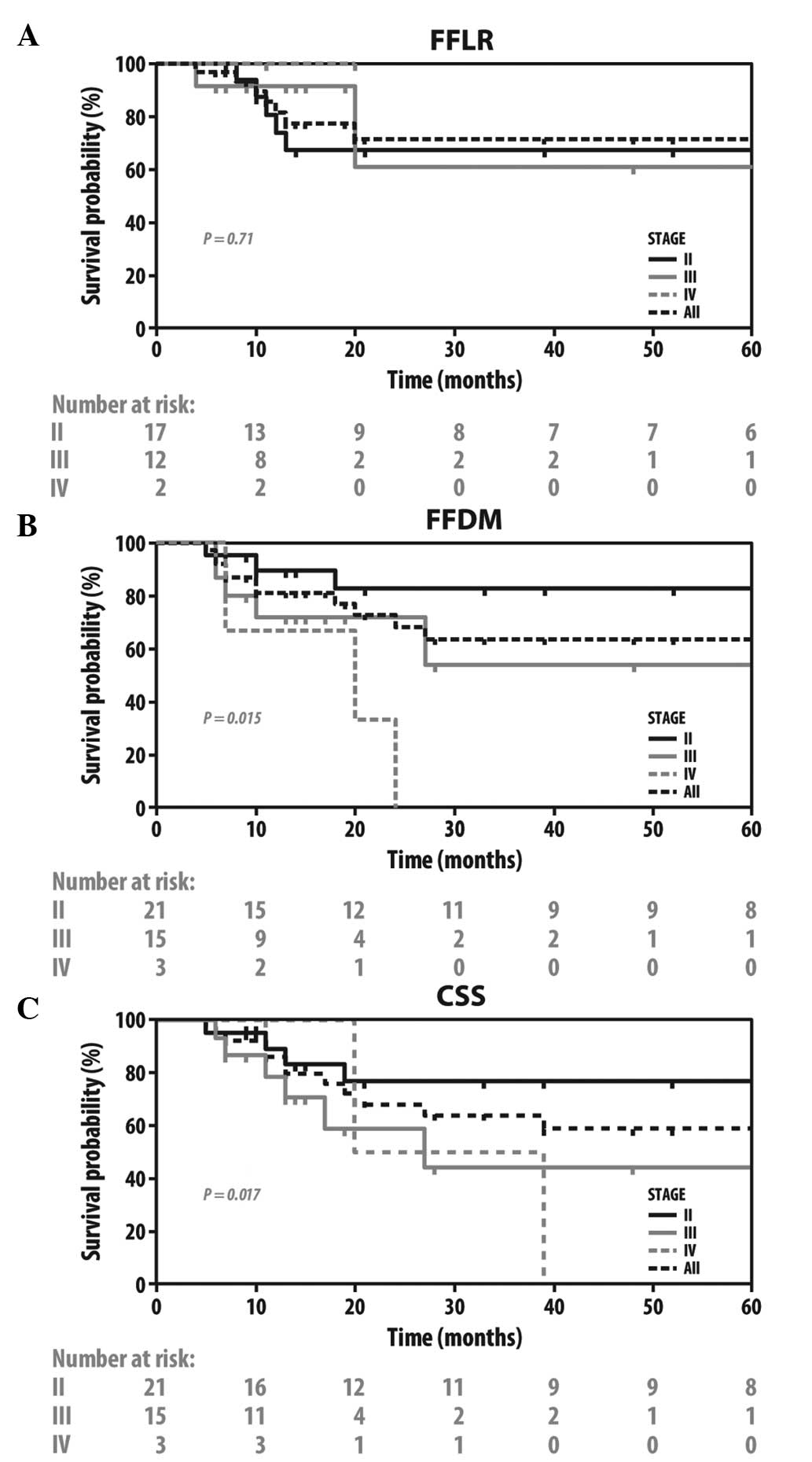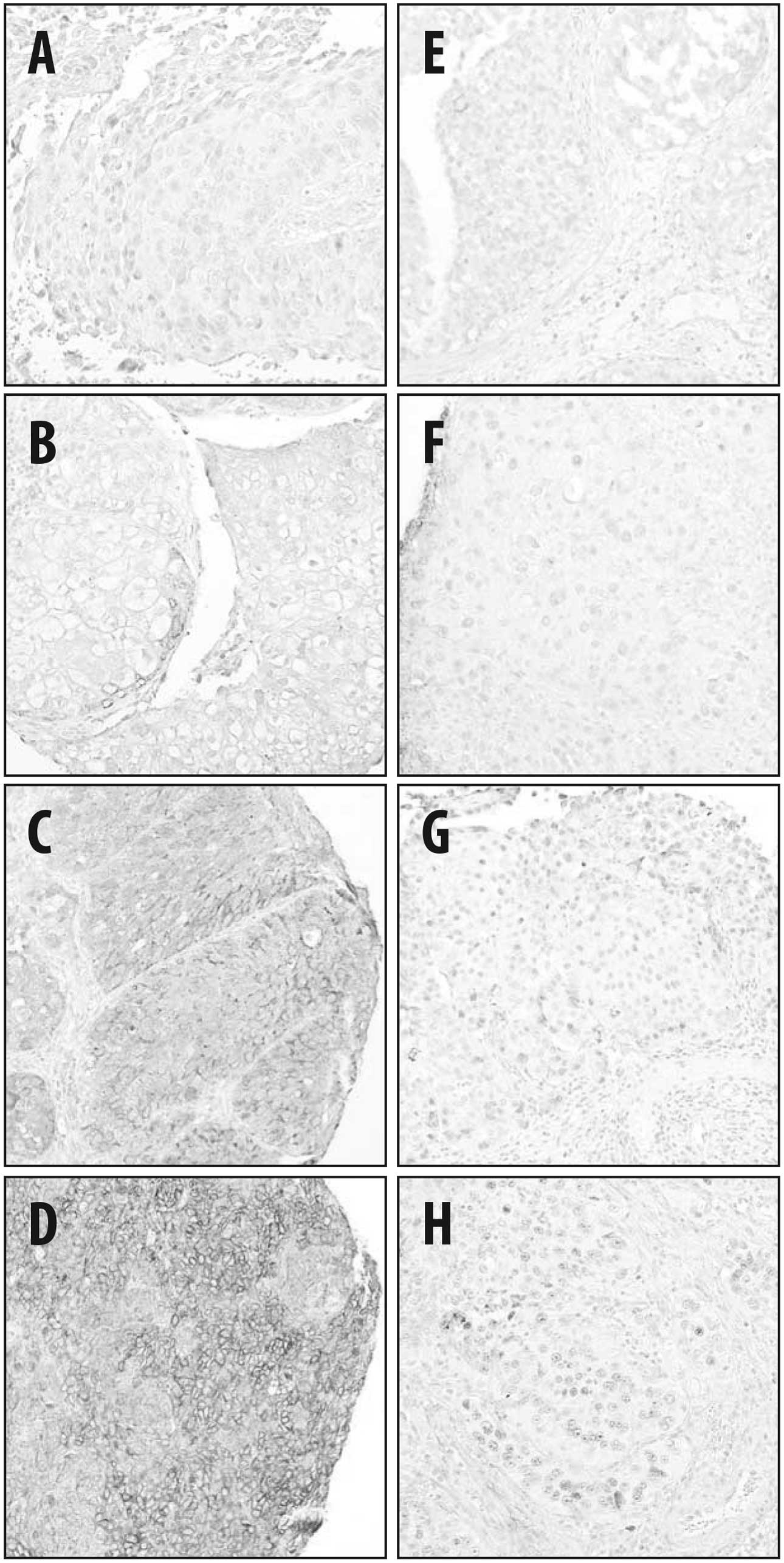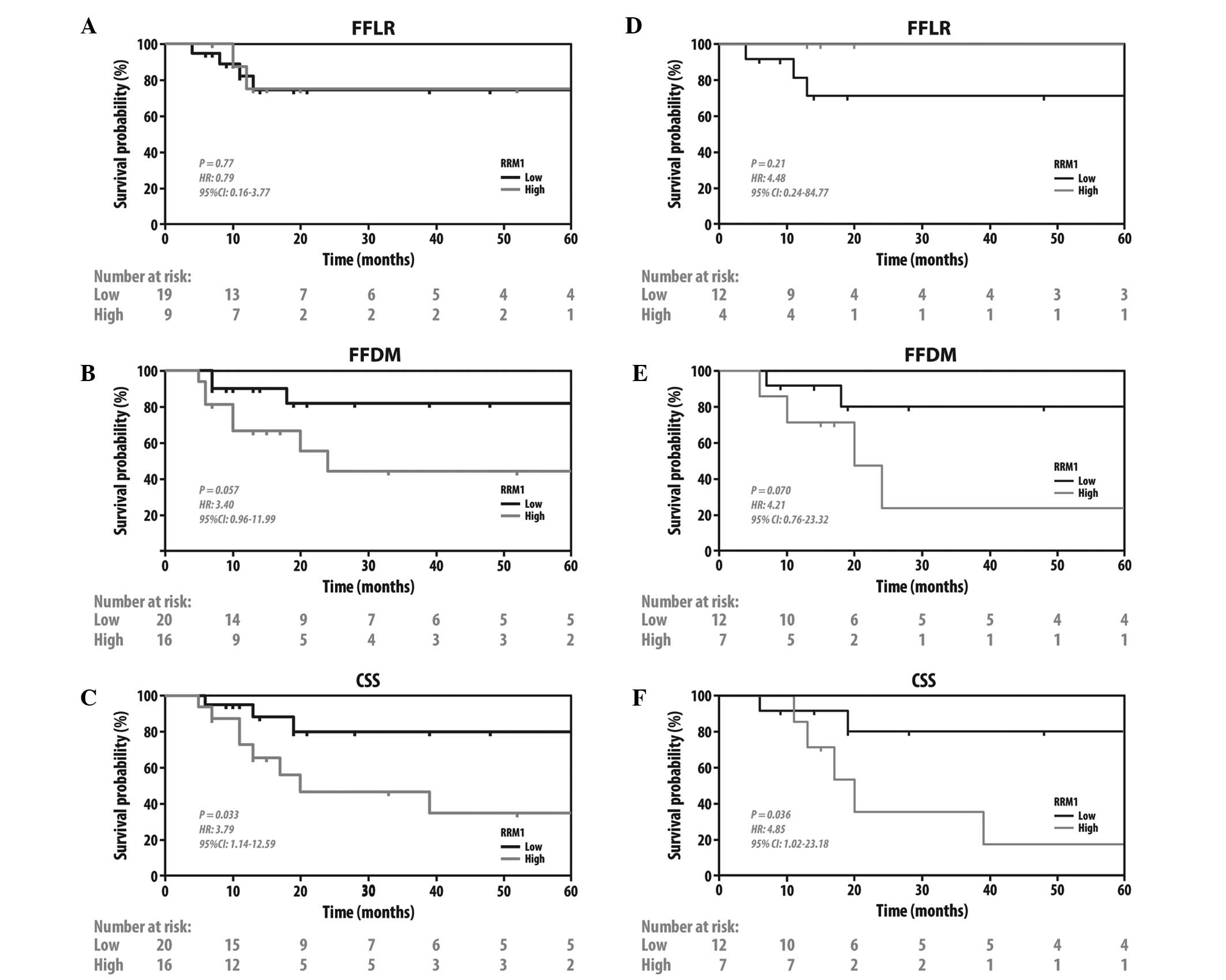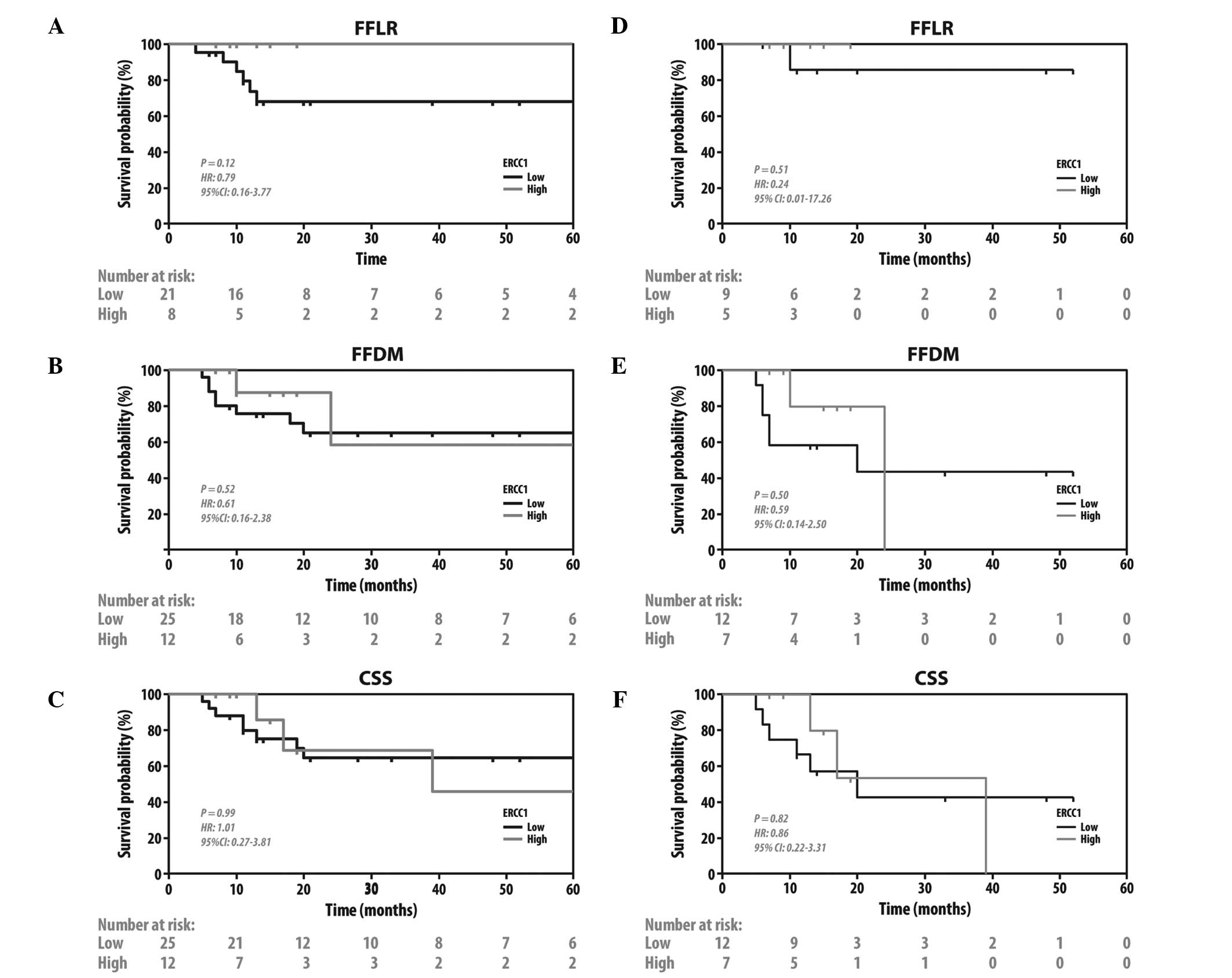|
1.
|
Siegel R, Naishadham D and Jemal A: Cancer
statistics, 2012. CA Cancer J Clin. 62:10–29. 2012. View Article : Google Scholar
|
|
2.
|
Milosevic M, Gospodarowicz M, Zietman A,
et al: Radiotherapy for bladder cancer. Urology. 69(Suppl 1):
80–92. 2007. View Article : Google Scholar
|
|
3.
|
Efstathiou JA, Bae K, Shipley WU, et al:
Late pelvic toxicity after bladder-sparing therapy in patients with
invasive bladder cancer: RTOG 89-03, 95-06, 97-06, 99-06. J Clin
Oncol. 27:4055–4061. 2009. View Article : Google Scholar : PubMed/NCBI
|
|
4.
|
Efstathiou JA, Spiegel DY, Shipley WU, et
al: Long-term outcomes of selective bladder preservation by
combined-modality therapy for invasive bladder cancer: the MGH
experience. Eur Urol. 61:705–711. 2012. View Article : Google Scholar
|
|
5.
|
Coppin CM, Gospodarowicz MK, James K, et
al: Improved local control of invasive bladder cancer by concurrent
cisplatin and preoperative or definitive radiation. The National
Cancer Institute of Canada Clinical Trials Group. J Clin Oncol.
14:2901–2907. 1996.
|
|
6.
|
James ND, Hussain SA, Hall E, et al:
Radiotherapy with or without chemotherapy in muscle-invasive
bladder cancer. N Engl J Med. 366:1477–1488. 2012. View Article : Google Scholar : PubMed/NCBI
|
|
7.
|
International Collaboration of Trialists;
Medical Research Council Advanced Bladder Cancer Working Party;
European Organisation for Research and Treatment of Cancer
Genito-Urinary Tract Cancer Group; et al: International phase III
trial assessing neoadjuvant cisplatin, methotrexate, and
vinblastine chemotherapy for muscle-invasive bladder cancer:
long-term results of the BA06 30894 trial. J Clin Oncol.
29:2171–2177. 2011. View Article : Google Scholar
|
|
8.
|
Sternberg CN, Donat SM, Bellmunt J, et al:
Chemotherapy for bladder cancer: treatment guidelines for
neoadjuvant chemo-therapy, bladder preservation, adjuvant
chemotherapy, and metastatic cancer. Urology. 69(Suppl 1): 62–79.
2007. View Article : Google Scholar
|
|
9.
|
Jordheim LP, Seve P, Tredan O and Dumontet
C: The ribo-nucleotide reductase large subunit (RRM1) as a
predictive factor in patients with cancer. Lancet Oncol.
12:693–702. 2011. View Article : Google Scholar : PubMed/NCBI
|
|
10.
|
Harshman LC, Bepler G, Zheng Z, Higgins
JP, Allen GI and Srinivas S: Ribonucleotide reductase subunit M1
expression in resectable, muscle-invasive urothelial cancer
correlates with survival in younger patients. BJU Int.
106:1805–1811. 2010. View Article : Google Scholar
|
|
11.
|
Zheng Z, Chen T, Li X, Haura E, Sharma A
and Bepler G: DNA synthesis and repair genes RRM1 and ERCC1 in lung
cancer. N Engl J Med. 356:800–808. 2007. View Article : Google Scholar : PubMed/NCBI
|
|
12.
|
Gossage L and Madhusudan S: Current status
of excision repair cross complementing-group 1 (ERCC1) in cancer.
Cancer Treat Rev. 33:565–577. 2007. View Article : Google Scholar : PubMed/NCBI
|
|
13.
|
Kim KH, Do IG, Kim HS, et al: Excision
repair cross-complementation group 1 (ERCC1) expression in advanced
urothelial carcinoma patients receiving cisplatin-based
chemotherapy. APMIS. 118:941–948. 2010. View Article : Google Scholar
|
|
14.
|
Sun JM, Sung JY, Park SH, et al: ERCC1 as
a biomarker for bladder cancer patients likely to benefit from
adjuvant chemotherapy. BMC Cancer. 12:1872012. View Article : Google Scholar : PubMed/NCBI
|
|
15.
|
Kawashima A, Nakayama M, Kakuta Y, et al:
Excision repair cross-complementing group 1 may predict the
efficacy of chemoradiation therapy for muscle-invasive bladder
cancer. Clin Cancer Res. 17:2561–2569. 2011. View Article : Google Scholar : PubMed/NCBI
|
|
16.
|
Vilmar A, Garcia-Foncillas J, Huarriz M,
Santoni-Rugiu E and Sorensen JB: RT-PCR versus immunohistochemistry
for correlation and quantification of ERCC1, BRCA1, TUBB3 and RRM1
in NSCLC. Lung Cancer. 75:306–312. 2012. View Article : Google Scholar : PubMed/NCBI
|
|
17.
|
Ozcan MF, Dizdar O, Dincer N, et al: Low
ERCC1 expression is associated with prolonged survival in patients
with bladder cancer receiving platinum-based neoadjuvant
chemotherapy. Urol Oncol. 31:1709–1715. 2012. View Article : Google Scholar : PubMed/NCBI
|
|
18.
|
Ahmad A, Robinson AR, Duensing A, et al:
ERCC1-XPF endonuclease facilitates DNA double-strand break repair.
Mol Cell Biol. 28:5082–5092. 2008. View Article : Google Scholar : PubMed/NCBI
|
|
19.
|
Nocito A, Kononen J, Kallioniemi OP and
Sauter G: Tissue microarrays (TMAs) for high-throughput molecular
pathology research. Int J Cancer. 94:1–5. 2001. View Article : Google Scholar : PubMed/NCBI
|
|
20.
|
Smith DC, Mackler NJ, Dunn RL, et al:
Phase II trial of paclitaxel, carboplatin and gemcitabine in
patients with locally advanced carcinoma of the bladder. J Urol.
180:2384–2388. 2008. View Article : Google Scholar : PubMed/NCBI
|
|
21.
|
Higano CS, Tangen CM, Sakr WA, et al
Southwest Oncology Group Trial 8733: Treatment options for
muscle-invasive urothelial cancer for patients who were not
eligible for cystectomy or neoadjuvant chemotherapy with
methotrexate, vinblastine, doxorubicin, and cisplatin: report of
Southwest Oncology Group Trial 8733. Cancer. 112:2181–2187. 2008.
View Article : Google Scholar
|
|
22.
|
Kent E, Sandler H, Montie J, et al:
Combined-modality therapy with gemcitabine and radiotherapy as a
bladder preservation strategy: results of a phase I trial. J Clin
Oncol. 22:2540–2545. 2004. View Article : Google Scholar : PubMed/NCBI
|
|
23.
|
Shipley WU, Zietman AL, Kaufman DS, Coen
JJ and Sandler HM: Selective bladder preservation by trimodality
therapy for patients with muscularis propria-invasive bladder
cancer and who are cystectomy candidates - the Massachusetts
General Hospital and Radiation Therapy Oncology Group experiences.
Semin Radiat Oncol. 15:36–41. 2005. View Article : Google Scholar
|
|
24.
|
Pollack A, Zagars GK, Dinney CP, et al:
Preoperative radiotherapy for muscle-invasive bladder carcinoma.
Long term follow-up and prognostic factors for 338 patients.
Cancer. 74:2819–2827. 1994. View Article : Google Scholar : PubMed/NCBI
|
|
25.
|
No authors listed. Induction chemotherapy
plus radiation compared with surgery plus radiation in patients
with advanced laryngeal cancer. The Department of Veterans Affairs
Laryngeal Cancer Study Group. N Engl J Med. 324:1685–1690. 1991.
View Article : Google Scholar
|
|
26.
|
Ceppi P, Volante M, Novello S, et al:
ERCC1 and RRM1 gene expressions but not EGFR are predictive of
shorter survival in advanced non-small-cell lung cancer treated
with cisplatin and gemcitabine. Ann Oncol. 17:1818–1825. 2006.
View Article : Google Scholar : PubMed/NCBI
|
|
27.
|
Bellmunt J, Paz-Ares L, Cuello M, et al:
Gene expression of ERCC1 as a novel prognostic marker in advanced
bladder cancer patients receiving cisplatin-based chemotherapy. Ann
Oncol. 18:522–528. 2007. View Article : Google Scholar : PubMed/NCBI
|
|
28.
|
Kawashima A, Takayama H and Tsujimura A: A
review of ERCC1 gene in bladder cancer: implications for
carcinogenesis and resistance to chemoradiotherapy. Adv Urol.
2012:8123982012. View Article : Google Scholar : PubMed/NCBI
|
|
29.
|
Simon GR, Schell MJ, Begum M, et al:
Preliminary indication of survival benefit from ERCC1 and
RRM1-tailored chemo-therapy in patients with advanced nonsmall cell
lung cancer: evidence from an individual patient analysis. Cancer.
118:2525–2531. 2012. View Article : Google Scholar
|
|
30.
|
Liu ZG, Chen HY, Cheng JJ, Chen ZP, Li XN
and Xia YF: Relationship between methylation status of ERCC1
promoter and radiosensitivity in glioma cell lines. Cell Biol Int.
33:1111–1117. 2009. View Article : Google Scholar : PubMed/NCBI
|
|
31.
|
Friboulet L, Olaussen KA, Pignon JP, et
al: ERCC1 isoform expression and DNA repair in non-small-cell lung
cancer. N Engl J Med. 368:1101–1110. 2013. View Article : Google Scholar : PubMed/NCBI
|
|
32.
|
Fedeli U, Fedewa SA and Ward EM: Treatment
of muscle invasive bladder cancer: evidence from the National
Cancer Database, 2003 to 2007. J Urol. 185:72–78. 2011. View Article : Google Scholar : PubMed/NCBI
|
|
33.
|
RTOG 0712 Protocol Information. February
28–2012.http://www.rtog.org/ClinicalTrials/ProtocolTable/StudyDetails.aspx?study=0712.
Accessed December 17, 2013.
|


















